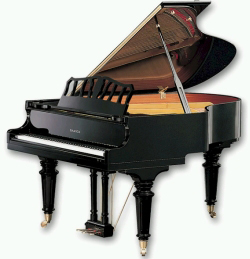

Open-back headphones are less common than closed-back partly because of its main disadvantage – the lack of isolation, which in many circumstances can be a real problem and makes this headphone type not suitable for everyone. Secondly, the soundstage, which is the perceived depth and width of the sound, of the closed-back headphones tends to be smaller and less airy/open compared to open-back headphones, which tend to produce a bigger, “live” sound.Įars may become sweaty/hot after a few hours of use

Those that have bigger ear cups and softer padding tend to be more comfortable than others, even then they often apply more pressure on your head (tighter feel) and are not as comfortable for long sessions as open-back headphones. After a few hours of wearing you might want to take a break and let your head and ears to rest.īut, not all of the closed-back headphones are created equal. Now, let’s talk about some of the trade-offs of closed-back headphones.įirstly, due to the lack of air flow, closed-back headphones tend to trap heat and moisture and, therefore, they are not very comfortable to wear for extended periods of time. Let’s not forget that the noise produced by the keys/key action might be even more annoying to some people than the sound of you practicing a new piece, for example. Not only does the closed-back design blocks out the ambient noise, but it also prevents the sound from leaking into your surroundings, so others in the room will be able to read, watch TV, rest without a problem… They are also great to use in the office and for commuting, while open-back headphones are rarely used outside the home.
What is the samick piano rated tv#
Unlike open-back, closed-back headphones have a solid outer shell, which doesn’t allow air to pass through the cups.įrom the sound perspective, sealed ear cups provide more powerful and deep bass compared to the open-back cups.īut the main advantage of closed-back headphones is good noise isolation.Ĭlosed-back cups block out a lot of outside noise, which makes such headphones much more suitable to use in noisy environments (background TV noise, kids, traffic, etc.). This is most probably the most popular and familiar type of headphones, which you can find at any electronics store.

Wondering what the heck any of that means? Let’s find out! What headphone type to look for? These aspects will mostly depend on whether the headphones have open- or closed-back design. There are also a few other important characteristics to consider, such as soundstage, isolation, leakage and so on. Therefore, each pair selected for this list is comfortable for extended listening sessions and exert just the right amount of pressure on the head.

If you’re a piano lover like me (otherwise you probably wouldn’t be reading this article), you’ll probably want to wear your headphones over long periods of time and not feel any pain or fatigue. Headphones that offer neutral well-balanced sound with even frequency response are best suited for piano sound.ĭJ headphones including popular bass-oriented headphones such as Beats, Sony (Extra Bass line) should be avoided.Ĭomfort. Sound quality and comfort are the two main things I was looking for, trying to find the best headphones to use with digital pianos.


 0 kommentar(er)
0 kommentar(er)
